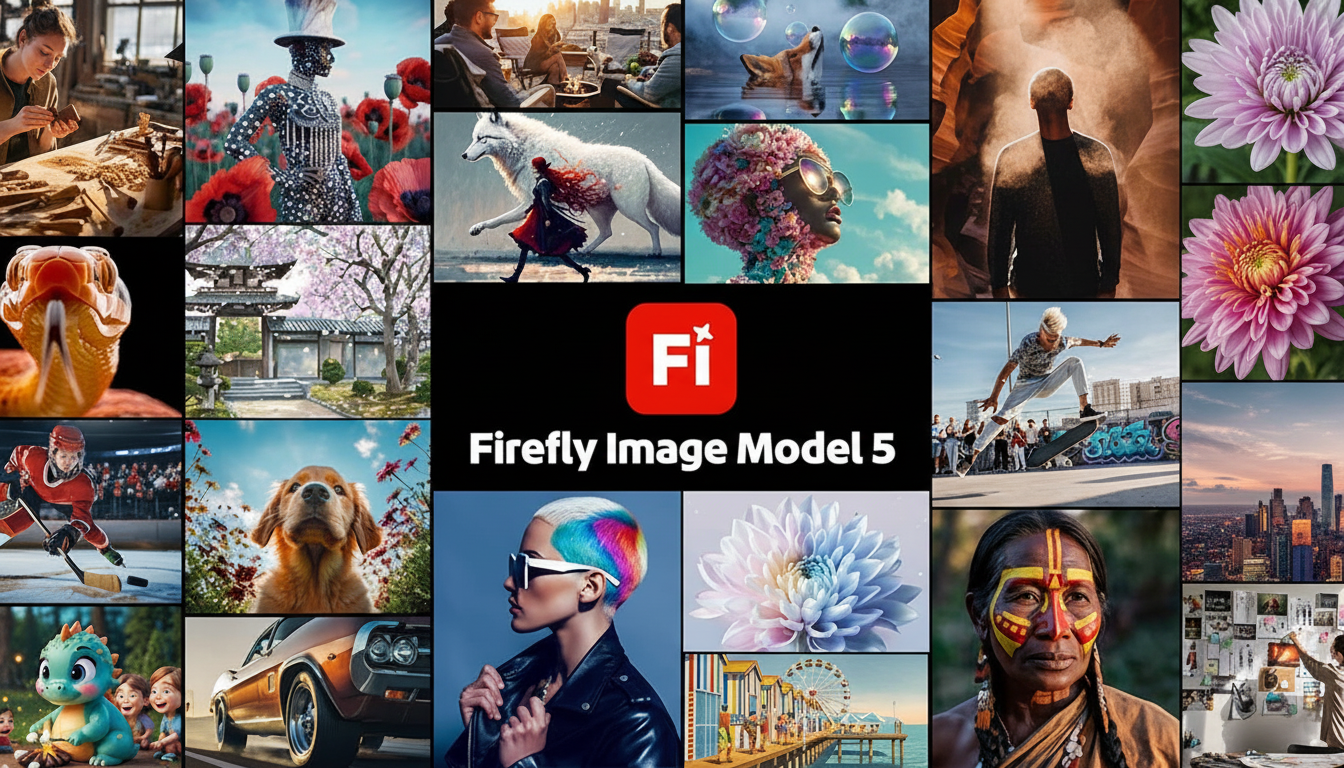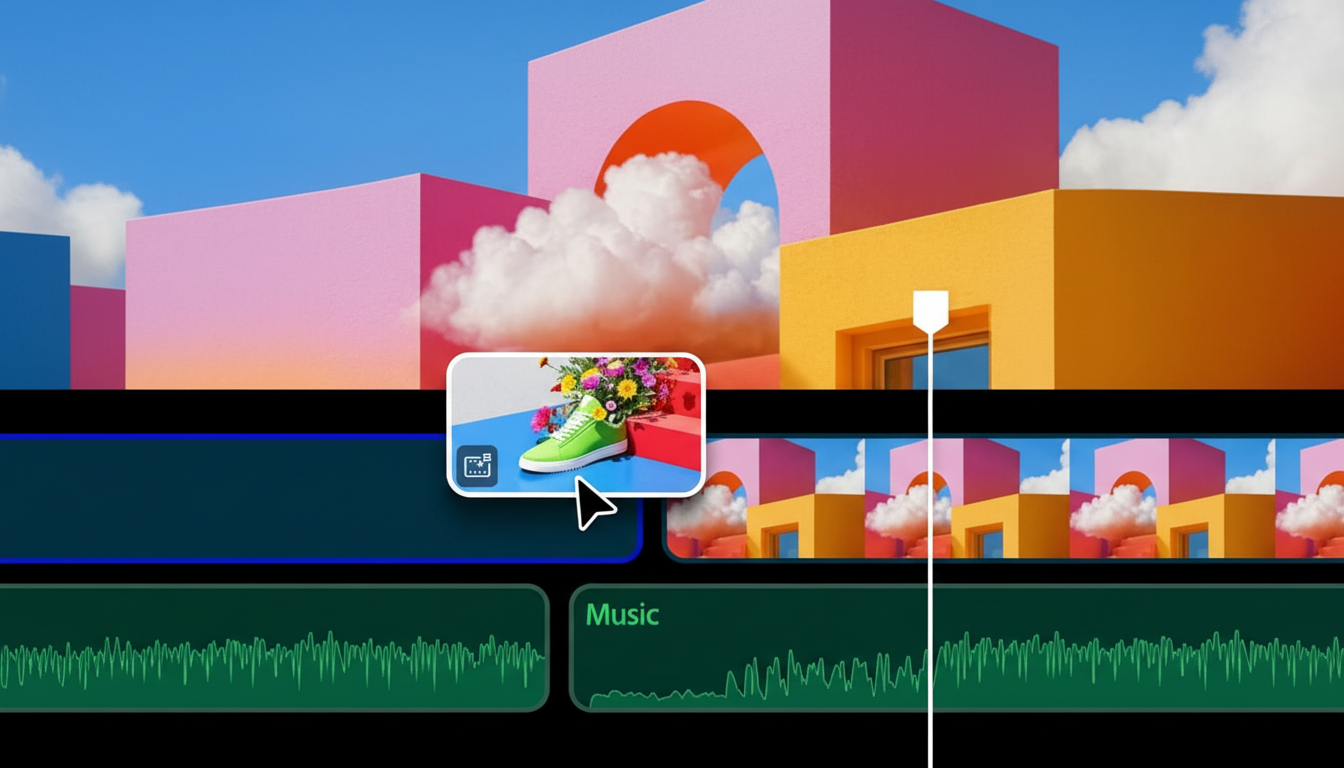Firefly Image 5 Raises the Creativity Ceiling
Specifically, Adobe is launching Firefly Image 5 — a substantial update that includes native layer support in addition to more faithful image generation and the power for creators to construct their own models based on their art content. The release expands Firefly’s role beyond the single-shot prompts and not only lends it less of a novelty status, but more that of a production-grade tool for design teams or solo artists.
Complementing the model upgrade, Adobe is updating the Firefly experience with a new unified prompt box for still images and video, enhanced third-party model integration and new audio tools for creating soundtracks or generating synthetic voices as powered by ElevenLabs.
- Firefly Image 5 Raises the Creativity Ceiling
- Native Resolution and Layered Editing in Firefly Image 5
- Brand and Style Custom Models for Consistent Outputs
- A Growing Multi‑Model Hub for Image and Video Creation
- Video and Audio Get Generative Bonus Features
- Trust, Safety, and Commercial Use Policies for Firefly
- What It Means for Creatives Using Firefly Image 5

Native Resolution and Layered Editing in Firefly Image 5
Firefly Image 5 now natively renders at an actual resolution of 4 megapixels versus the one megapixel that was possible in the previous generation and then scaled up to reach 4 MP. That matters a great deal for fine detail — hair, fabric texture, product labeling — where native pixels tend to hold together better in print and close crops.
Headlining the offering is layered, prompt-driven editing. Instead of baking everything into a flattened output, the model identifies objects as layers that can be resized, rotated, swapped and refined with language. How about non-destructive adjustments: swap a background without losing edge fidelity, fix a hand pose without remeshing the face, or adjust lighting on a subject layer with reflections.
Adobe claims the model is especially strong at rendering people, a weak spot for many image generators. For teams creating lifestyle imagery, that translates to fewer retakes and less need for outside retouchers to correct hands, eyes and skin tones.
Brand and Style Custom Models for Consistent Outputs
Enter Firefly. In closed beta, Firefly now enables creators to build their custom model by dragging and dropping in their own assets, be they illustrations, photography, or sketches — it can learn a specific visual language better this way. Picture a publisher who trains a model to produce spot art in an established editorial style, or a retailer generating on-brand product scenes that conjure brand color, composition and lighting rules automatically.
This is somewhere between the lightweight style prompts approach and the heavyweight model fine-tuning that researchers in labs do. The bet here is that small private corpora — dozens to a few hundred reference images — can drive significant consistency without the overhead of training infrastructure. It also meets a rising industry need for brand-safe outputs without manual guardrails on every project.
A Growing Multi‑Model Hub for Image and Video Creation
Firefly’s site serves as a platform for both Adobe and third-party models, and has also recently added OpenAI, Google, Runway and Flux among its roster of options. A new prompt box allows users to toggle image or video generation, switch models, and change aspect ratios from a single surface, with the homepage now surfacing recent files and generations for quicker iteration.
Creative directors, the hook for you is practical — compare looks across multiple systems, choose your best starting point without bouncing between apps or losing history. That baseline agility comes in handy as creative cycles shrink around campaign launches or social trends.

Video and Audio Get Generative Bonus Features
Adobe is also redeveloping its video generation and editing tool, which will have a comforting timeline and layer stack familiar to those who know After Effects; it’s currently in private beta. But layer awareness is a step toward scene-level control — you know, like swapping a product in shot without nuking the grade or motion blur.
For audio, Firefly introduces AI soundtrack creation and text-to-speech through ElevenLabs. For makers of short-form videos, that means a single workflow supports visuals, voiceover and background music, with a new keyword-driven “word cloud” to help stitch prompts together as quickly as possible. The goal: fewer plug-ins and export/import loops between tools.
Trust, Safety, and Commercial Use Policies for Firefly
At Adobe, we’re leaning on Content Credentials — a workflow that corresponds to the C2PA standard and ascribes provenance metadata to AI outputs. That makes it simpler for agencies and publishers to follow whether the imagery was AI-assisted, and how it was edited — a growing need given enterprise compliance workflows.
The company has also trumpeted enterprise-friendly protections around Firefly since release, part of a growing list that includes indemnity for certain commercial uses and training data policies based on licensed content and public domain sources. As custom models begin to be introduced, we anticipate more stringent controls for rights-managed asset pools and opt-out mechanisms for contributors to stay high on the agenda.
What It Means for Creatives Using Firefly Image 5
Layer support and native resolution raise the ceiling in quality, but at this point template models are the lever that scales everything. A shoe brand, for example, could receive thousands of on-trend product shots across seasons that all bore a steady look and feel. A news team could fire up an illustration model trained on its visual identity, skipping the uncanny leaps typical of generic generators.
There’s a lot of competition — Midjourney is pushing aesthetic range, OpenAI comes closer to proving controllability, and the community around it prizes openness more — but Adobe’s edge will be tight workflow integration. Combining generative powers with the layer-and-timeline approach to work that creatives are already familiar with, Firefly Image 5 bridges the gap between a prompt and a refined deliverable.
The next checkpoint will be how well bespoke models extrapolate from uniformly small datasets, and to what extent the signature editing layers faithfully represent reality under an intense deadline. Should Adobe stick the landing, Image 5 might turn generative AI from being a drafting tool into something closer to a repeatable production system for agencies and in-house teams.

